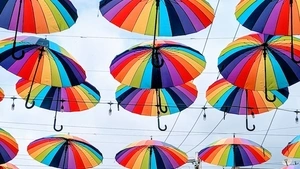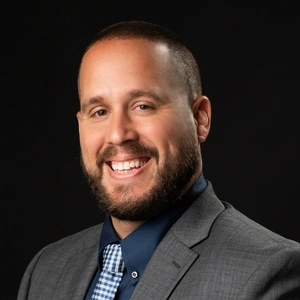Faculty Expert
Educators, regardless of position, are role models.
“I think LGBTQ students especially need someone who they can attach to,” said Kyle Schultz, a Penn GSE lecturer and licensed clinical psychologist who specializes in working with the queer community.
In the best scenarios, life at home is a safe space for kids who identify somewhere along the queer spectrum. Teachers, school counselors, and administrators owe it to their LGBTQ+ students, along with the rest of the student body, to provide an inclusive environment where everyone feels comfortable. “I often ask students, why do you remember a teacher or school counselor?” said Schultz. “They tell me it’s because that person made them feel good about themselves.”
While the premise of creating a supportive LGBTQ+ educational environment is simple, many factors need to be realized. One of those elements is increasing cultural competence in schools. knowing our own values and biases around queer identities and experiences, developing a deep knowledge and empathic understanding of queer identities and experiences, and integrating these things into culturally informed educational practices. “This starts with a genuine and honest examination of your own thoughts and feelings about queer identities, particularly those that are negative,” said Schultz. As educators reflect on these thoughts and feelings, they can make more intentional choices to become more culturally informed about queer identities and experiences."
Increased awareness can lead to more inclusive spaces
“When we learn about other cultures and acquire knowledge beyond what we see on TV, we become more open-minded,” said Schultz. Culturally competent educators set the tone for positive learning environments, which creates space for all people, regardless of how they identify — or don’t.
In 2021, educators are tasked with teaching Generation Z — a group notorious for rejecting labels. “Students might not want to identify as anything specific,” said Schultz. “This is okay and requires educators to be okay with not knowing. Their role is not to know but to support their students regardless.”
Schultz recommends cultural immersion through three main outlets: reading, engaging, and absorbing trusted media sources. He has a few suggestions for creating LGBTQ+ student inclusiveness at school:
Teach curriculum that includes LGBTQ+ people across all subjects
Intervene when homophobic language or actions occur
Model good behavior by normalizing different sexual orientations
Talk about your same-sex spouse or other people in your life who identify as not straight when the opportunity naturally presents itself (as long as you feel safe doing so)
At the end of the day, remember that the stakes may be higher for LGBTQ+ students than many people realize.
Coming out or exploring labels and identities is a big deal. “Safe space stickers are important in schools,” said Schultz. “They are beacons for LGBTQ+ kids — these stickers contribute to a cultured environment that becomes part of the scenery.”
Kids are still being kicked out of their homes for coming out — they need safety, trust, and confidentiality at school. For educators, confidentiality is key. Teachers and school staff should use hypothetical language and avoid naming students when asking their peers for advice in situations where they feel out of their league. “Let’s create educational environments where teachers contribute by preventing bullying and discrimination, and supporting all of their students — including the LGBTQ+ population,” said Schultz.
— By S.J. Punderson

Subscribe to the Educator's Playbook
Get the latest release of the Educator's Playbook delivered straight to your inbox.
Media Inquiries
Penn GSE Communications is here to help reporters connect with the education experts they need.

